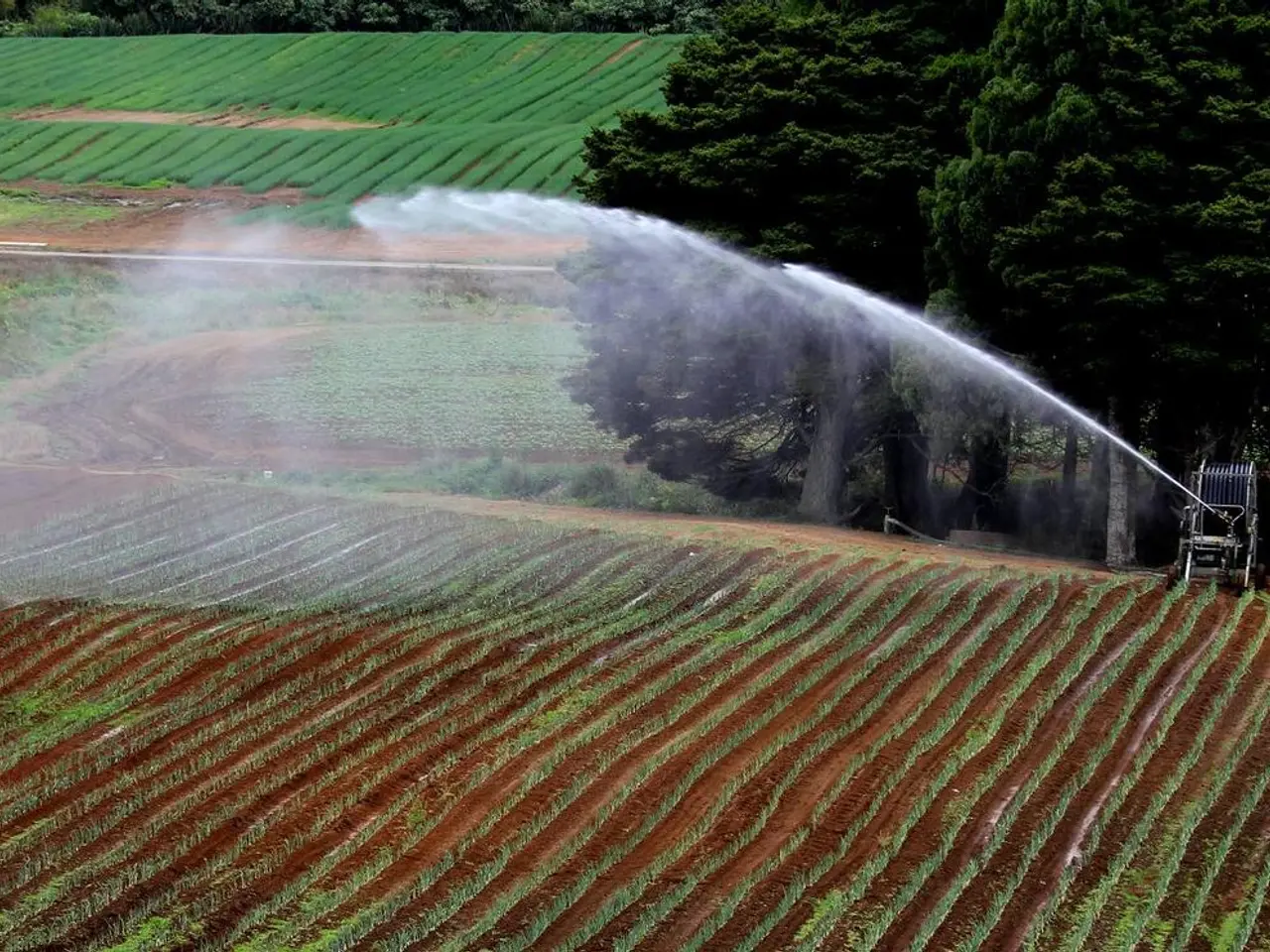Deadly floods prompt Beijing to issue fresh storm alert
Heavy Rain Alert Issued in Beijing: Residents Urged to Stay Indoors
A red alert, the highest in a four-tier system, has been announced by the municipal weather service in an unspecified location. This alert forecasts heavy rain from noon on Monday until Tuesday morning, posing significant risks such as flash floods, mudslides, and landslides.
The alert comes after Beijing was struck hard last week, resulting in at least 44 deaths and nine people missing due to floods. Tragically, at least 31 fatalities occurred at an elderly care center in Miyun district. This incident has prompted a local official to admit "gaps" in disaster readiness.
Residents in flood-hit areas have been surprised by the speed at which floodwaters inundated homes and devastated villages. To minimize risks, authorities have urged citizens to remain indoors and avoid going outdoors unless absolutely necessary.
Citizens are also advised not to drive through flooded or waterlogged roads and to avoid parking in low-lying areas. They should follow official travel advisories and heed temporary traffic control or public transit suspensions. Enterprises and public institutions (except essential services) are instructed to suspend work to reduce risk.
All educational, cultural, sports, and outdoor tourism activities, including the closure of parks, scenic spots, and other leisure venues, have been suspended. Residents are encouraged to stay alert to official emergency alerts and evacuation orders, and to prepare for possible evacuation if residing in vulnerable zones.
Residents in mountainous districts should be especially cautious of secondary disasters like landslides and mountain torrents. Authorities have activated the citywide highest-level (Level 1) emergency response for flood control to coordinate disaster mitigation and ensure readiness. This involves reinforcing flood defenses, adapting evacuation plans, and closing risky areas to safeguard residents.
Most parts of the city are expected to see 100 millimetres (four inches) of rain during a six-hour period overnight. Outlying areas could experience between 150mm and 200mm of rain. China experiences natural disasters, particularly in the summer, with some regions experiencing heavy rain while others bake in searing heat.
China aims to make its massive economy carbon-neutral by 2060, but currently, it is the world's biggest emitter of greenhouse gases that drive climate change. Tens of thousands of people in northern China have been evacuated due to torrential rains that have wreaked havoc in parts of the country since last month.
Stay informed via official channels and strictly adhere to safety instructions to minimize the risk posed by the extreme heavy rainfall and its aftermath.
[1] Source: https://www.reuters.com/world/china/chinas-capital-beijing-issues-red-alert-heavy-rain-2021-11-27/ [2] Source: https://www.aljazeera.com/news/2021/11/28/beijing-issues-red-alert-as-heavy-rain-hits-china-capital [3] Source: https://www.bbc.com/news/world-asia-china-59702878 [4] Source: https://www.reuters.com/world/china/china-issues-red-alert-heavy-rain-beijing-after-week-deadly-floods-2021-11-27/ [5] Source: https://www.cnn.com/2021/11/27/asia/china-beijing-floods-intl-hnk/index.html
- The heavy rainfall in Beijing is a stark reminder of the impacts of climate change on the environment, with science predicting more extreme weather events due to global warming.
- As the floods in Beijing demonstrate, the impacts of extreme weather events are not limited to the environment but also pose significant political challenges, highlighting the need for better disaster preparedness and effective mitigation strategies.
- In the general news, the flooding in Beijing has sparked a broader discussion about the role of human activities, particularly the burning of fossil fuels, in exacerbating climate change and the need for a shift towards environmental science and sustainable practices to reduce future risks.








